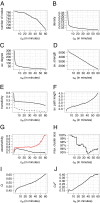A high-resolution human contact network for infectious disease transmission
- PMID: 21149721
- PMCID: PMC3009790
- DOI: 10.1073/pnas.1009094108
A high-resolution human contact network for infectious disease transmission
Abstract
The most frequent infectious diseases in humans--and those with the highest potential for rapid pandemic spread--are usually transmitted via droplets during close proximity interactions (CPIs). Despite the importance of this transmission route, very little is known about the dynamic patterns of CPIs. Using wireless sensor network technology, we obtained high-resolution data of CPIs during a typical day at an American high school, permitting the reconstruction of the social network relevant for infectious disease transmission. At 94% coverage, we collected 762,868 CPIs at a maximal distance of 3 m among 788 individuals. The data revealed a high-density network with typical small-world properties and a relatively homogeneous distribution of both interaction time and interaction partners among subjects. Computer simulations of the spread of an influenza-like disease on the weighted contact graph are in good agreement with absentee data during the most recent influenza season. Analysis of targeted immunization strategies suggested that contact network data are required to design strategies that are significantly more effective than random immunization. Immunization strategies based on contact network data were most effective at high vaccination coverage.
Conflict of interest statement
The authors declare no conflict of interest.
Figures




References
-
- Murray CJL, Lopez AD, Chin B, Feehan D, Hill KH. Estimation of potential global pandemic influenza mortality on the basis of vital registry data from the 1918-20 pandemic: A quantitative analysis. Lancet. 2006;368:2211–2218. - PubMed
-
- Fiore A, et al. Prevention and control of influenza: Recommendations of the Advisory Committee on Immunization Practices (ACIP) MMWR Recomm Rep. 2008;59(RR-8):1–62. and erratum (2010) 59:1147. - PubMed
Publication types
MeSH terms
Grants and funding
LinkOut - more resources
Full Text Sources
Other Literature Sources
Medical

